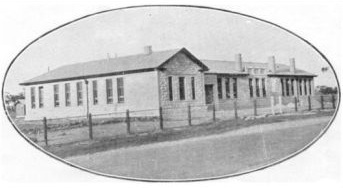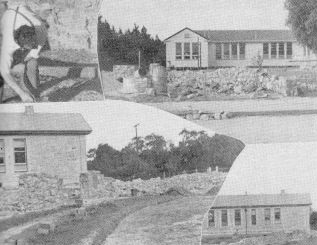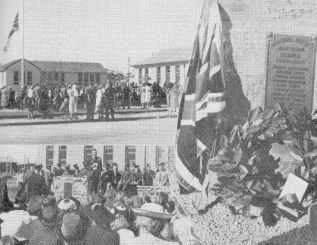School History 1940-1949
In 1940 due to an increase of students Mr. Haese was transferred at the end of the first term and replaced by Mr. Johnson. The staff had increased to six full-time teachers, two part-time and one junior teacher. World War II has having a more significant effect on the school and its activities by now. A War Savings Group was started for staff and students. While the girls knitted the boys looked for scrap metal. Late in the year the school was visited by the Directors of Education from all States of Australia and they said that the school was the best and most beautiful school in the state.
In 1941 the school introduced Religious Instruction on a very limited basis. Mr C.P. Mountford, a noted explorer and anthropologist, visited the school and showed the film about his 1940 exploratory expedition, "Brown Men and Red Sand", when persuaded by a member of his team, Laurie Sheaard, who was an old scholar. This with a departmental subsidy realised enough money to purchase 160 new books in order to upgrade the library. The students used to read just a few of these books and this led to queries by the staff and the sudden disappearance of these books from the shelves.
On the 29th of May 1942 in the "Victor Harbour Times'" under "Wanted to Sell" the following appeared:
"Ships bell, weighing 30 lb., relic of wreck. Offers to Mill, Middleton."
Mr. Sheard, the new chairman of the school council, thought that the bell, if properly mounted would make an excellent war memorial. The council agreed and so the bell was bought. The company who had to build the arch had to comply with Defence contracts and priorities, construction of the arch was deferred. To ensure its construction Mr. Sheard donated the tendered price which was put in a special bank account. In 1943 the bell was mounted "temporarily" on upright in the assembly area where it still hangs today.
At the start of 1943 a new classroom arrived and another arrived in October. When the second arrived the Leaving Class moved in straight away because the need was so great with attendance having grown to 156. In the spring undertook a development program in an original way. The oval was restricted by a natural waterway. As a house contest each lunchtime a team of boys armed with shovels, picks and wheelbarrows went ditch-digging to fill in the waterway. The dirt from the ditch filled the waterway while the ditch became the new waterway which still exists today. The project was completed in 18 "boy hours" and was won by Angas.
In 1944 enrolments had risen to 198 and the school opened with a new principal, Mr. Tregenza. To permit expansion of agricultural and sporting activities the Department purchased 33 additional acres of land. Mr. Tragenza introduced the School Hymn which was sung at all important school functions. A change the students enjoyed was the abolition of week-end homework.
In 1945 enrolments rose to 221 and Nuriootpa High School became the second biggest country school in the state behind Port Pirie High School. Accommodation was strained again until the arrival of a long-promised triple classroom block, which had a laboratory, typing room and a woodwork centre, relieved the congestion. At the end of the war a repatriation committee was formed and a survey revealed that 99 old scholars had enlisted.
In 1946 a further increase in enrolments led to an increase in staff. Hockey was introduced as a sport for girls and accessibility of the new Nuriootpa War Memorial Swimming Pool provided a venue for Life-Saving classes and Learn-to-Swim classes.
Early in 1947 the school held its first swimming carnival one week after the Learn-to-Swim classes concluded. In Agriculture the planting of 109 stone-fruit trees considerably expanded the orchard. During the war there was an ease on wearing the school uniform but now there was a new argument in favour of the uniform now appeared.
 The School in 1947 |
Just like in 1938 poliomyelitis affected the opening in 1948. The teachers reported on the 10th of February and the students began one fortnight later. When school began enrolments were down because of the ease of obtaining employment. Plans for a War Memorial were prepared for the school free of charge by Mr. Eric Dallwitz.
In 1949 the Memorial Wall became and active project and the the 26th of March the plaque was unveiled by Colonel E.T. Dean, D.S.O, V.D.
 Building the Memorial Wall |
 Opening the Memorial Wal |











